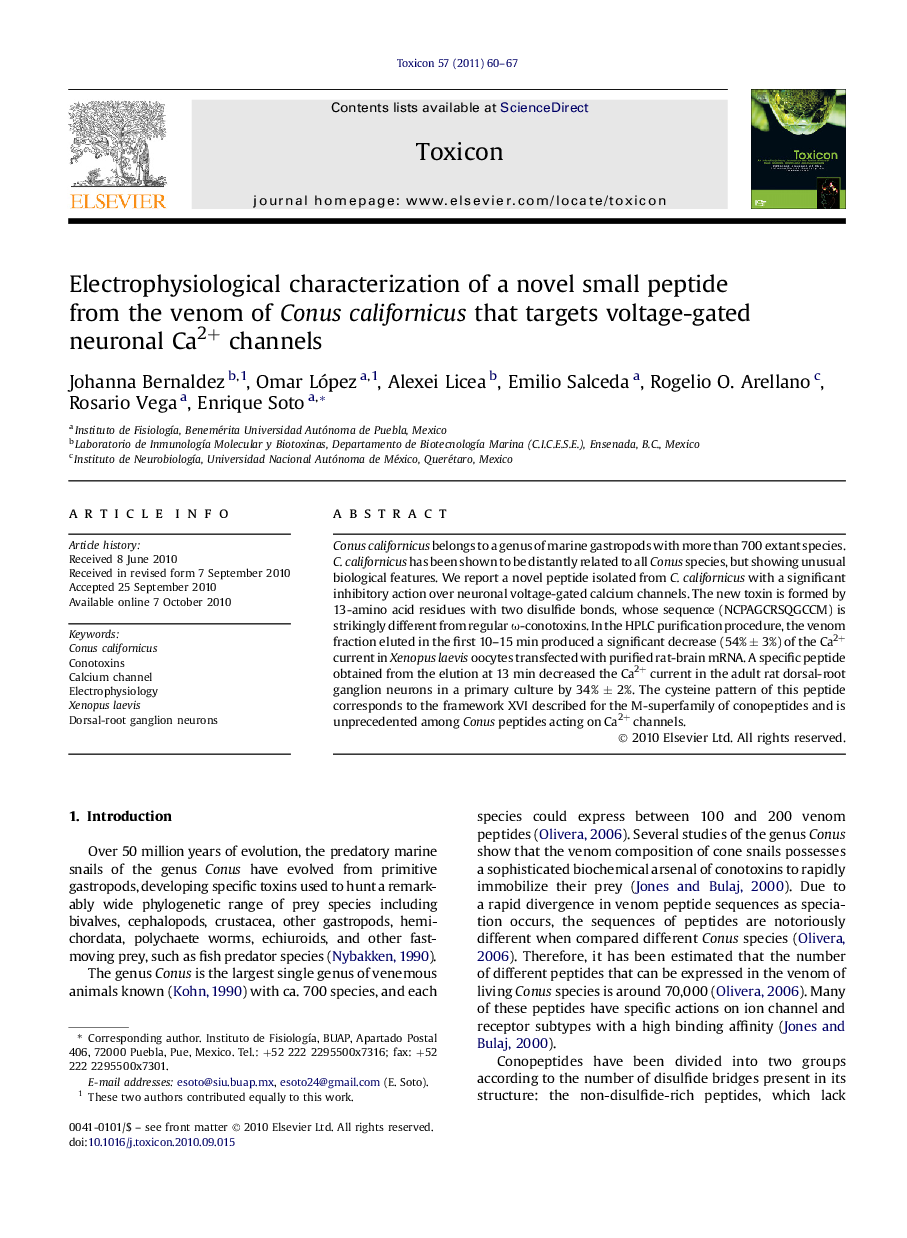| Article ID | Journal | Published Year | Pages | File Type |
|---|---|---|---|---|
| 10880141 | Toxicon | 2011 | 8 Pages |
Abstract
Conus californicus belongs to a genus of marine gastropods with more than 700 extant species. C. californicus has been shown to be distantly related to all Conus species, but showing unusual biological features. We report a novel peptide isolated from C. californicus with a significant inhibitory action over neuronal voltage-gated calcium channels. The new toxin is formed by 13-amino acid residues with two disulfide bonds, whose sequence (NCPAGCRSQGCCM) is strikingly different from regular Ï-conotoxins. In the HPLC purification procedure, the venom fraction eluted in the first 10-15 min produced a significant decrease (54% ± 3%) of the Ca2+ current in Xenopus laevis oocytes transfected with purified rat-brain mRNA. A specific peptide obtained from the elution at 13 min decreased the Ca2+ current in the adult rat dorsal-root ganglion neurons in a primary culture by 34% ± 2%. The cysteine pattern of this peptide corresponds to the framework XVI described for the M-superfamily of conopeptides and is unprecedented among Conus peptides acting on Ca2+ channels.
Related Topics
Life Sciences
Biochemistry, Genetics and Molecular Biology
Biochemistry, Genetics and Molecular Biology (General)
Authors
Johanna Bernaldez, Omar López, Alexei Licea, Emilio Salceda, Rogelio O. Arellano, Rosario Vega, Enrique Soto,
